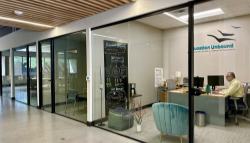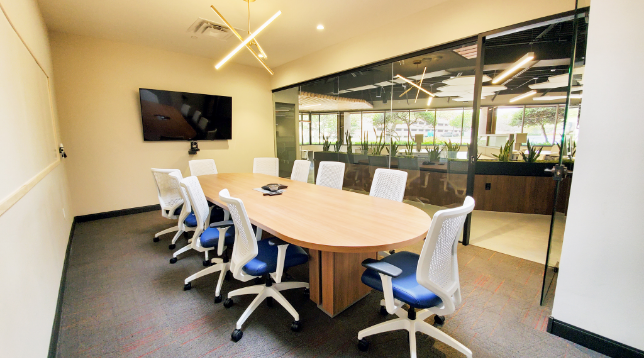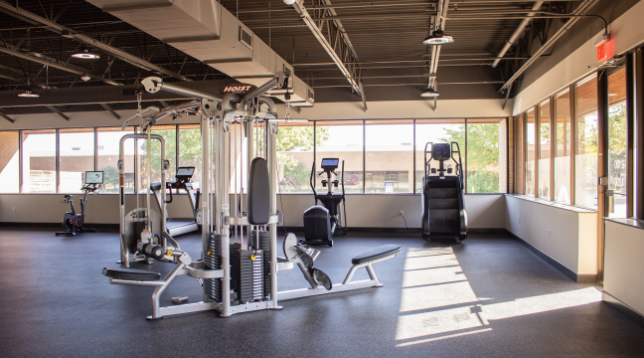According to a Gallup study, the sudden speed of the Coronavirus crisis has forced seven in ten adults to work full-time or part-time at home at some point since April 2020. Soon after, the nation was showered with articles and research studies proving how productivity had increased with employees working from home. Many companies are hesitant to give up the office entirely, yet they cannot deny the success of remote work and the pleas of the employees who no longer want to commute full time.
The new normal is an emerging hybrid working model.
What is the Hybrid Workplace Model?
Business leaders praise hybrid work models as a safe and flexible way for teams to have the freedom to choose where to work and divide their time between working from home and a central office.
How a hybrid environment works depends on the company, but it can include a handful of on-site employees or multiple teams working on staggered schedules that change every few weeks. In some cases, employees can choose when to work from home and when to report to the office while others have their schedules more standardized.
Is Hybrid Work Here to Stay?
It is hard to assume that the hybrid workplace is just a fad when major corporations such as Google, Microsoft, Target, and Ford are transitioning into this model. According to a study conducted by the PwC, less than one in five executives say they want to return to the office as it was pre-pandemic.
While there is no consensus yet between employers and employees on the optimum number of working days to be spent at home or in the office, a PwC survey states 68% of company executives say a typical employee should be in the office at least three days a week to maintain a distinct company culture.
If companies expect the transition to go smoothly, they must give their employees a compelling reason to come to the office. They are now competing with factors such as flexible working hours, relaxed dress codes, and tranquility that are hard to find in a busy workplace.
On the other hand, some people are eager to return to the office even just a couple of days a week. These individuals might find remote work stressful due to communication gaps, finding a distraction-free space in their home, or weak Internet service.
The reopening of offices, changing expectations, and advancements in technology and communication, have led many companies and their employees to reassess what it takes to be productive.
Is Hybrid Work Right for Your Company?
While the trend towards hybrid workplaces is gaining momentum, employees are looking for opportunities that allow them greater flexibility. Keep in mind, a hybrid workplace model is not suitable for every company, and it may not be suitable for all employees to work remotely. Workers who do not work remotely may not feel as well treated as colleagues with more flexible working time options. When it comes to designing a workable hybrid policy, employers must establish fair rules that apply to all workers, wherever they may be.
How HEXA Can Help Your Workforce
Support employees by focusing on how they can do their best work. Start by improving the areas of the office where employees meet, such as collaboration rooms, work cafes, and meeting rooms.
If you are seeking support and expertise to increase your chances of a smooth transition, HEXA Coworking offers customized solutions to help your company create a unique hybrid workplace model that benefits both your employees and your organization.
Contact us for more information on options that can provide the precise level of support needed to manage your temporary or long-term space requirements.
Resources:
- https://www.gnapartners.com/resources/articles/how-to-model-your-hybrid-workplace
- https://www.flexjobs.com/employer-blog/hybrid-workplace-for-companies/
- https://www.fuze.com/blog/remote-work/3-ways-successfully-transition-your-organization-hybrid-workforce
- https://blog.employerflexible.com/transitioning-your-business-to-a-post-pandemic-hybrid-work-model
- https://ideas.lifelabslearning.com/10-tips-for-transitioning-to-hybrid
- https://www.commercebank.com/business/trends-and-insights/2021/four-tips-to-transition-to-a-hybrid-work-environment
- https://www.forbes.com/sites/thomasroulet/2021/04/22/making-hybrid-office-work-4-tips-to-prepare-the-transition/
- https://www.inc.com/young-entrepreneur-council/how-to-successfully-transition-to-a-hybrid-workforce.html
- https://www.startribune.com/how-to-successfully-transition-to-a-hybrid-work-environment/600065304/
- https://www.wework.com/ideas/workspace-solutions/flexible-products/hybrid-workplace
- https://centricconsulting.com/digital-consulting-services/business-anywhere/hybrid-workplace-strategy/
- https://www.shrm.org/hr-today/news/hr-news/pages/what-to-consider-when-moving-to-a-hybrid-work-model.aspx
- https://www.ipma-hr.org/stay-informed/hr-news-issues/hr-news-article/how-to-create-a-hybrid-workplace-for-a-hybrid-workforce
- https://www.fastcompany.com/90646872/ask-these-10-questions-to-find-out-if-your-hybrid-workplace-could-be-toxic
- https://blog.smarp.com/hybrid-work
- https://www.macslist.org/for-employers/the-future-of-work-is-hybrid-heres-how-to-ease-the-transition

















